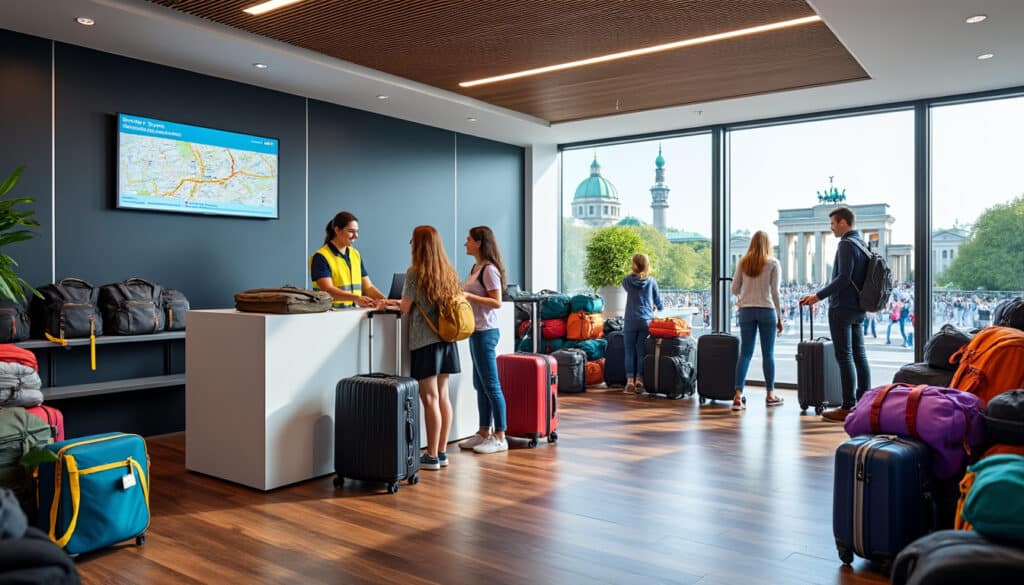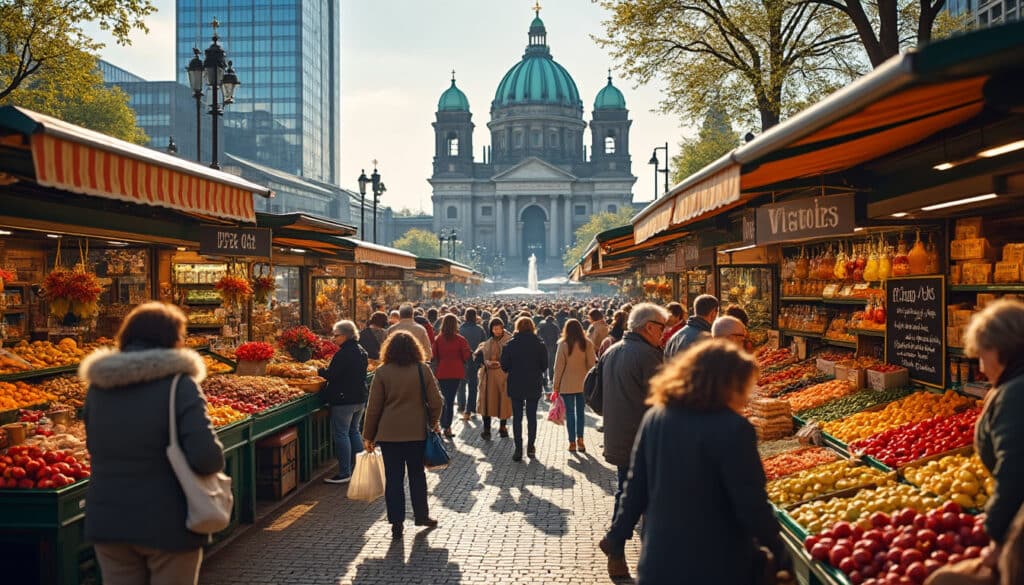Train travel in Berlin offers a unique blend of practicality and exploration, making it an indispensable component of both daily commutes and tourist itineraries. When navigating the bustling metropolis that is Berlin, understanding the intricate yet efficient network of train stations is crucial. The railway system in Berlin not only facilitates efficient travel within the city but also connects it to various parts of Germany and Europe, making travel easy, seamless, and accessible. The Berlin Hauptbahnhof, with its impressive architecture and numerous connections, stands as a central hub. Powered by Deutsche Bahn and local operators like S-Bahn Berlin and U-Bahn Berlin, this network is designed to accommodate the impressive traffic the city experiences daily. In this article, we delve into the key elements of train travel in Berlin, exploring its main stations, ticketing systems, and connectivity with other forms of transport within the city. 🚆
Berlin Hauptbahnhof: A Modern Marvel in Train Travel
Berlin Hauptbahnhof, the main train station, is a pivotal part of Berlin’s transport infrastructure. Not just a station, it is a hub of architectural grandeur and logistic efficiency. Opened in 2006, this station is the largest in Europe, designed to handle hundreds of thousands of passengers daily. The station embodies the fusion of Berlin’s historic atmosphere and its forward-thinking modernity.
With five stories of railway facilities, retail spaces, and dining options, Berlin Hauptbahnhof ensures a unique traveling experience. The station serves as the central interchange point for long-distance trains, regional lines, and the iconic S-Bahn and U-Bahn networks. Its strategic location and the services provided inside make it a pivotal point for those traveling to or from Berlin.
Among the key services offered at Berlin Hauptbahnhof are the high-speed InterCity Express (ICE) and the efficient Regionalbahn services. These trains connect Berlin to major German cities such as Munich, Hamburg, and Leipzig, and extend to other European capitals. The Deutsche Bahn and FlixTrain operate seamlessly to provide a mix of high-speed and budget-friendly travel options.
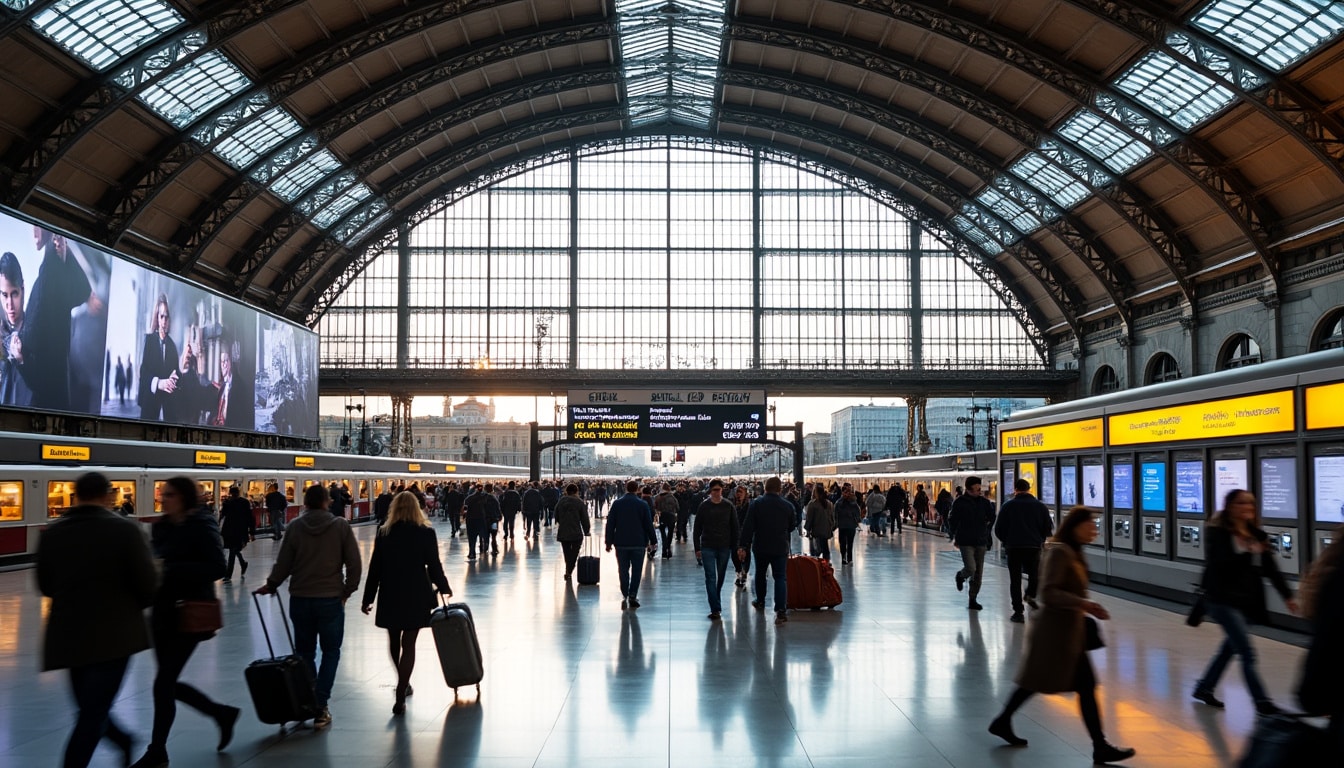
For international visitors, understanding how to navigate this gigantic structure might seem daunting. However, the station is clearly signposted, and with the Berliner Verkehrsbetriebe (BVG) travel information center located conveniently, assistance is always at hand. From platform information to ticketing, all one needs can be found in various languages, ensuring no traveler is left confused.
Navigation and Services Offered
Within the Berlin Hauptbahnhof, navigating between its extensive network of platforms can be complemented by the station’s digital displays and information booths. Here are some services and features that make visiting this station straightforward:
- 🎫 Ticket Machines and Counters: Easily accessible across the station for purchasing tickets for Deutsche Bahn, Regionalbahn, and S-Bahn lines.
- 🍴 Dining and Retail Options: A variety of culinary choices from quick snacks to sit-down meals, as well as shopping opportunities.
- 🦽 Accessibility Services: Elevators, escalators, and dedicated assistance for travelers with disabilities.
- 📱 Free Wi-Fi: Available throughout the station, ensuring travelers can stay connected.
- 🔍 Lost and Found: Services available for lost items, ensuring peace of mind.
Keeping these aspects in mind can significantly enhance the experience of passing through Berlin Hauptbahnhof, ensuring that whether you’re in transit or simply exploring, your time is well spent.
Commuter Lines: S-Bahn and U-Bahn Networks
Berlin’s commuter trains, namely the S-Bahn and U-Bahn, form an essential backbone of the city’s public transportation system. Distinct yet complementary, these networks provide extensive coverage across Berlin’s expansive landscape. The S-Bahn, operated by S-Bahn Berlin, primarily manages above-ground services, while U-Bahn Berlin takes charge of underground routes.
The S-Bahn comprises multiple lines that run through Berlin, connecting the city center with outer districts and neighboring areas. This network is especially notable for linking with the Berlin Brandenburg Airport, ensuring efficient travel to and from the city’s aerial entry points. Moreover, S-Bahn lines like the famous Ringbahn cover Berlin in a loop, maximizing reach across the city.
Meanwhile, the U-Bahn system delivers an extensive underground network, well-known for being punctual and extensively covered. Designed with a mix of modern and historic stations, U-Bahn Berlin provides not just a ride but an experience, taking passengers through the intricacies of Berlin’s underground tunnels.
S-Bahn and U-Bahn: An Overview of Operations
Here’s how both systems contribute to Berlin’s seamless movement:
- 🚈 S-Bahn Berlin:
- Operates with frequent services connecting central and peripheral areas.
- Key lines include the S1, S2, and S3, which connect important hubs like Potsdam and Oranienburg.
- Operates with frequent services connecting central and peripheral areas.
- Key lines include the S1, S2, and S3, which connect important hubs like Potsdam and Oranienburg.
- 🚇 U-Bahn Berlin:
- With over 173 stations, it covers primarily central urban areas.
- Notable lines include the U1, U2, and U8 for accessing key city attractions and districts.
- With over 173 stations, it covers primarily central urban areas.
- Notable lines include the U1, U2, and U8 for accessing key city attractions and districts.
Both S-Bahn and U-Bahn are well integrated into the broader Berliner Verkehrsbetriebe system, with shared ticketing solutions that allow easy transfers between services.
Tickets and Fares: Navigating Berlin’s Pricing System
Traveling in Berlin involves understanding its fare system, which is categorized into zones, ensuring clarity and fairness in transport costs. The city is divided into fare zones A, B, and C. Zone A covers the city center, zone B includes the surrounding suburban areas, and zone C covers the outer sections, notably reaching the Berlin Brandenburg Airport.
Different ticket types cater to diverse needs, whether you’re a resident commuting daily or a tourist exploring the city. Single-ride tickets, day passes, and longer-term tickets are conveniently available at stations or online via apps. Understanding these options is key to optimizing your travel budget and experience.
Types of Tickets
Here’s a closer look at available ticket options:
- 🎟️ Single Tickets: Valid for one journey, with no transfers allowed between zones.
- 🗓️ Day Passes: Allow unlimited travel on the day of purchase across all zones.
- 📆 Weekly/Monthly Tickets: Ideal for regular commuters, offering cost savings over single-ticket purchases.
To cater to digital-savvy passengers, BVG provides an efficient mobile app, easing ticket purchases and travel planning. Travelers can also benefit from cashless payment options, using cards or smartphone apps, making transactions smooth and convenient. For comprehensive details on navigating Berlin’s public transport and payment systems, check out this guide.
| Ticket Type 🚉 | Price 💶 | Validity 📅 |
|---|---|---|
| Single Ticket | €3.50 | One journey within respective zones |
| Day Pass | €9.00 | Unlimited travel for one day |
| Weekly Ticket | €38.00 | Seven consecutive days |
International Connectivity: Berlin as a European Hub
Berlin isn’t just a focal point for domestic travel; it’s a significant gateway to Europe. The extensive rail connections emanating from Berlin stations allow seamless cross-border travel. Whether heading to Amsterdam, Paris, or Prague, trains facilitate these journeys efficiently, with comfort and speed.
The excellent connectivity is largely due to Europäische Bahngesellschaft’s collaborations with Deutsche Bahn, ensuring Berlin’s links with cities across 45 countries remain robust. This is bolstered by operators like FlixTrain, who offer additional affordable travel services across Europe.
Popular destinations include:
- 🇳🇱 Amsterdam: Just under six hours with direct routes available.
- 🇫🇷 Paris: Approximately eight-hour journey, bringing you into the heart of France’s capital.
- 🇩🇰 Copenhagen: A comfortable seven-hour travel time.
This accessibility to Europe’s vast landscape underscores Berlin’s status not just as a German metropolis but as a key European transport nucleus. For those interested in exploring Berlin’s gateway role in detail, the full scope can be viewed on this platform.
Planning Your International Journey
When planning an international rail journey from Berlin, consider:
- 📅 Advance Booking: Secure seats on busy routes by booking in advance.
- 🧳 Luggage Considerations: Understand the luggage limits and storage services, further addressed here.
- 🌍 Travel Documentation: Ensure your passport and any required visas are in order, as discussed here.
Whether for business or leisure, the capability to traverse continents with Berlin as your starting point offers an invaluable asset for any traveler.
Local Insights: Enhancing Your Berlin Train Experience
Maximizing your train travel experience in Berlin involves more than just understanding timetables and networks; it includes diving into the city’s rich cultural tapestry. Berlin’s train stations, particularly the smaller ones, often house hidden gems, from art installments to vibrant markets.
Tapping into this urban culture layer can transform transit into an exploration of its own. For instance, commuters might discover rotating art exhibits in some U-Bahn stations, providing moments of serendipity during routine travel. Additionally, weekend flea markets and pop-up events frequently spring up in and around station precincts.
As part of the train commute culture, you can find myriad places to enjoy a quick bite or a leisurely meal at stations. The diverse range of food and drink options reflects Berlin’s multicultural identity, from traditional German flavors to global cuisine. For an in-depth dive into what other cultural experiences Berlin offers, visit this guide.
Uncovering the Hidden Features
Here’s a list of interesting finds in Berlin’s train travel environment:
- 🎨 Art Exhibits: Found in stations like Ostkreuz and Gesundbrunnen.
- 🎭 Cultural Events: Seasonal events near stations, showcasing local talents and traditions.
- 🥨 Culinary Delights: Sample local street food adjacent to stations like Alexanderplatz.
Capitalizing on these experiences not only enrichens travel but integrates one deeper into the life of the city, uncovering stories and sights that define Berlin’s unique appeal.
FAQ: Navigating Berlin’s Train System
- What is the main train station in Berlin?
Berlin Hauptbahnhof serves as the central hub and is the largest train station in Europe, connecting various domestic and international routes. - How do I purchase train tickets in Berlin?
Tickets can be bought at station machines, online, or via mobile apps, providing multiple methods to suit various preferences. - Are there any discounts available for frequent travelers?
Yes, BVG offers weekly and monthly passes which are cost-effective for frequent travel, along with discounts for students and seniors.
The ever-evolving nature of Berlin’s train travel continues to adapt to the needs of its users, making it easier and more engaging for everyone to explore the German capital and beyond.

Berlin, Germany’s vibrant capital, is more than just a city; it’s a living tapestry of culture, history, and nightlife. As one of the most visited destinations in Europe, Berlin attracts a diverse range of travelers, from history enthusiasts to art…
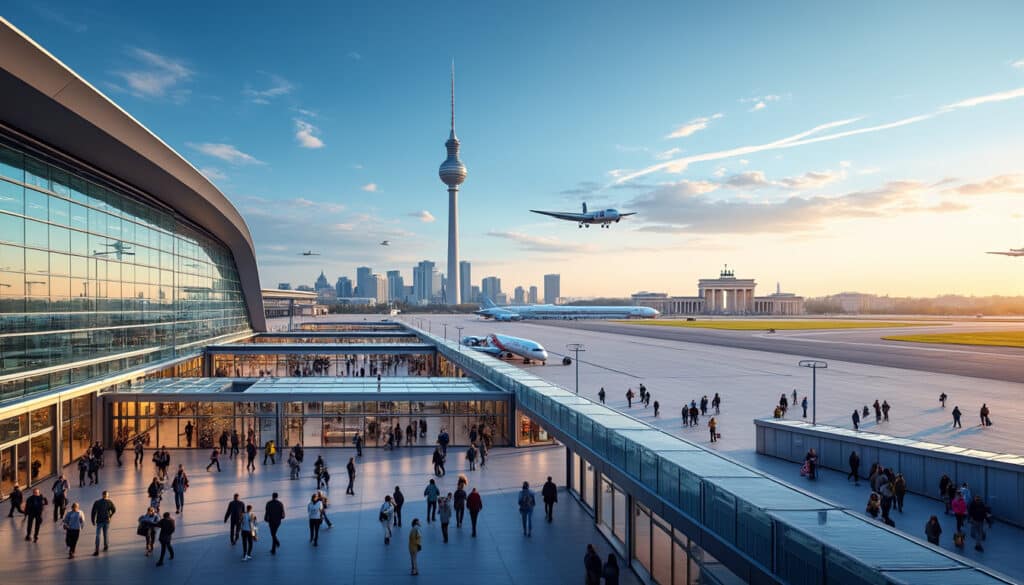
The bustling city of Berlin, recognized for its vibrant cultural scene and historical significance, is not only a hub of art, music, and politics but also a critical center for international travel. As Germany’s capital, it boasts well-structured aviation facilities…
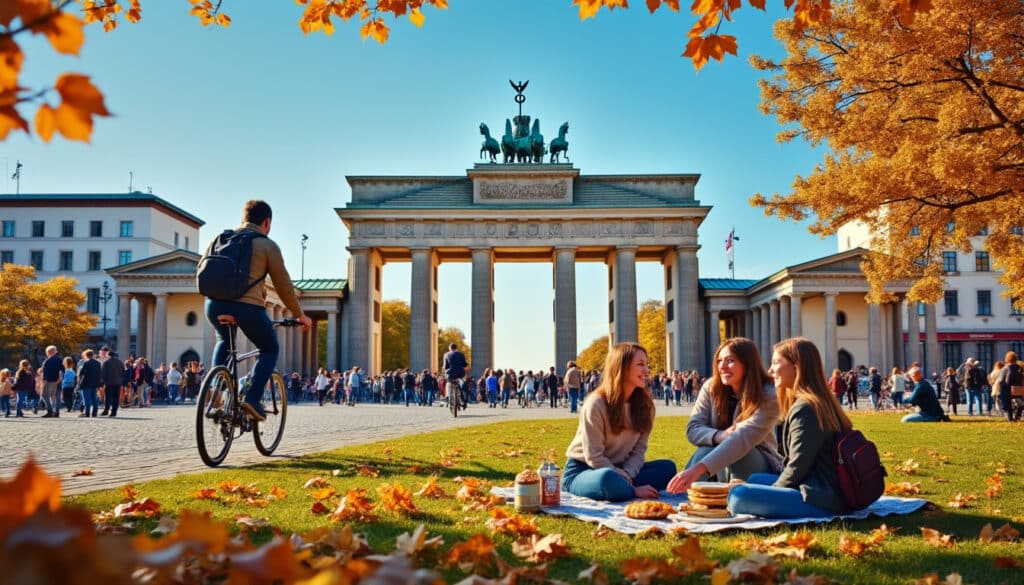
As one of Europe’s most buzzworthy destinations, Berlin boasts remarkable cultural diversity, vibrant nightlife, and a rich historical landscape. Yet, traveling to Berlin can be a significant expense, especially during peak tourist seasons. The shrewd traveler knows the importance of…

Currency and payments in Berlin
Berlin is a vibrant city bustling with diverse culture, history, and innovation. However, for travelers and newcomers, navigating its currency and payment systems can pose a few challenges. Understanding the nuances of using Euros, as well as cash and card…

Currency and tipping in Berlin
🌍 Berlin, a city where history and modernity intertwine, not only enchants with its pulsating urban landscape but also challenges visitors with its unique customs. Understanding currency and tipping norms here can significantly enhance your travel experience. In contrast to…
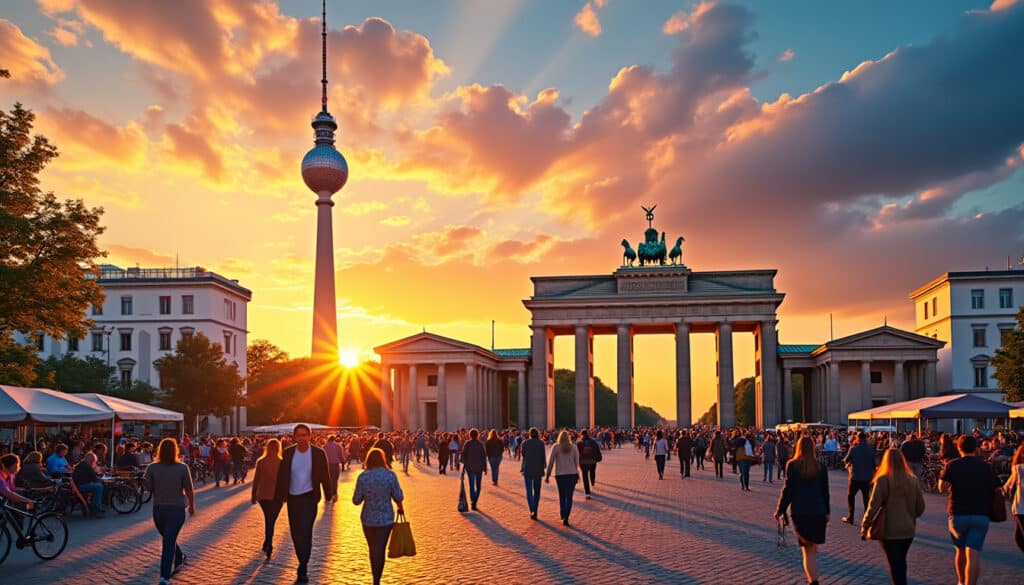
How many days to stay in Berlin?
✨ When planning a trip to Berlin, the bustling capital of Germany, discerning travelers often ponder over the ideal duration to thoroughly soak in its vibrant history, culture, and nightlife. With its eclectic mix of historical sites, modern architecture, and…
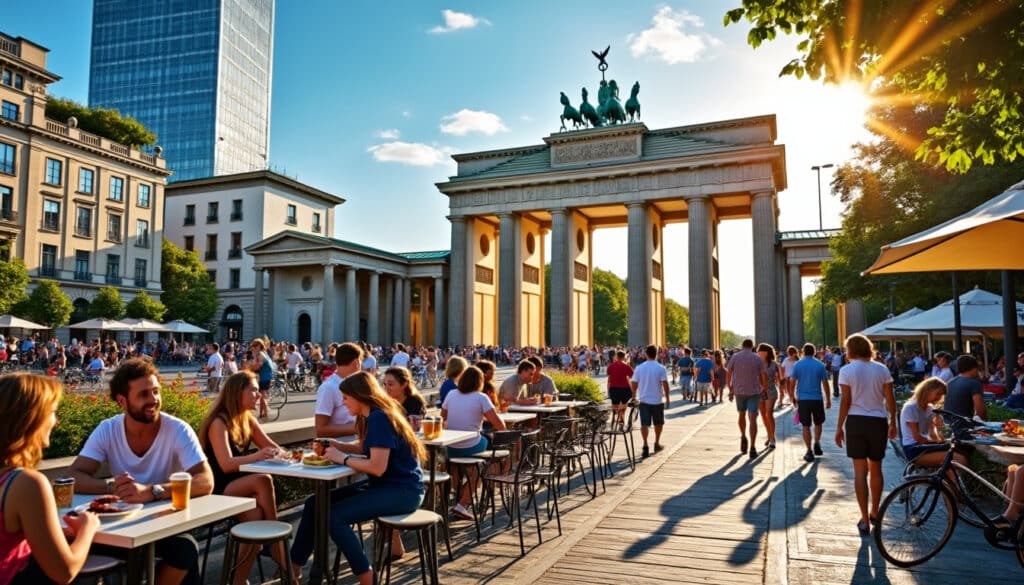
Berlin, the vibrant capital of Germany, entices travelers from all around the globe with its rich history, iconic landmarks, and buzzing cultural scene. However, one question often arises: Is Berlin expensive? For anyone planning a visit, understanding the costs associated…
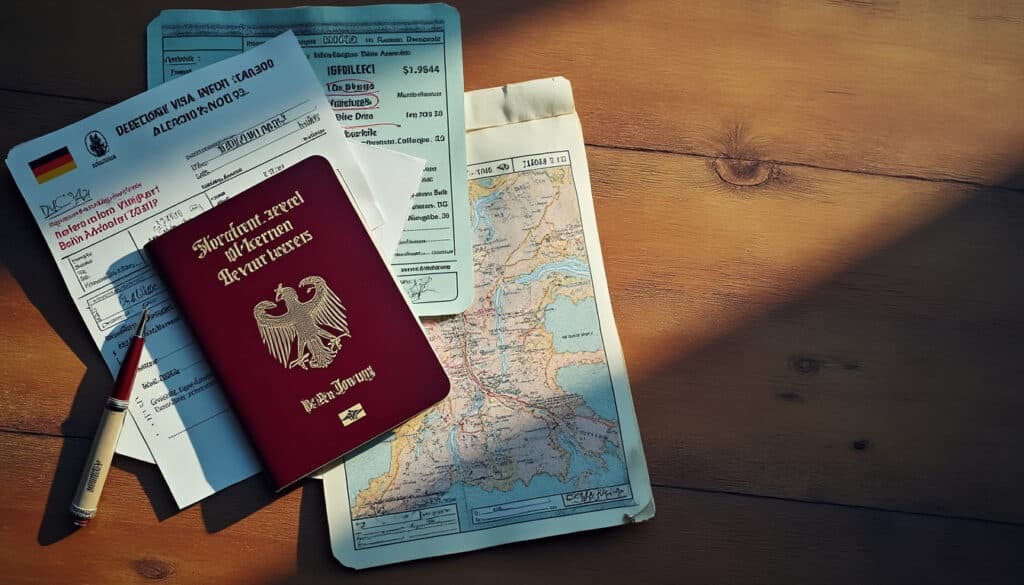
Passport and travel documents for Berlin
Traveling to Berlin is an adventure filled with rich history, vibrant culture, and energetic nightlife. However, before embarking on this journey, ensuring that all necessary travel documents are in order is essential. Navigating the requirements, particularly in a country known…

Berlin, a city where the echoes of history blend harmoniously with modernity, is a destination that promises more than just a glimpse into the past. Whether it’s the pulsating nightlife in thriving districts or serene strolls amidst architectural marvels, Berlin…

Public transport and payments in Berlin
Berlin’s public transportation system stands as a beacon of efficiency, quality, and connectivity, serving as one of the key pillars for seamless urban travel. Whether you are a resident or a visitor, understanding how this complex network operates is crucial…
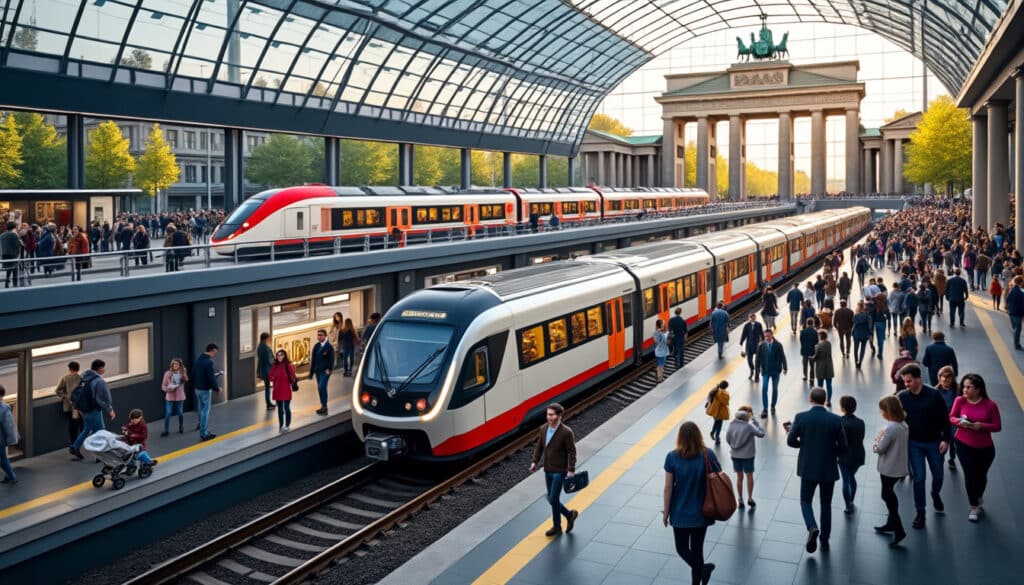
Berlin’s public transport system is renowned for its efficiency, robustness, and accessibility, making it one of the most user-friendly in Europe. Whether you are a resident or a visitor, navigating this sprawling German capital is seamless with its comprehensive network…

Shopping and delivery in Berlin
Berlin, with its vibrant allure and cosmopolitan charm, is not just the capital city of Germany; it is a bustling hub of shopping and delivery innovations. As 2025 unfolds, Berlin continues to embrace a range of shopping experiences, from traditional…

Berlin, the dynamic and vibrant heart of Germany, is a city that continuously redefines itself while never forgetting its tumultuous past. With its plethora of historical landmarks, modern art scenes, and buzzing nightlife, it captivates the hearts of travelers from…
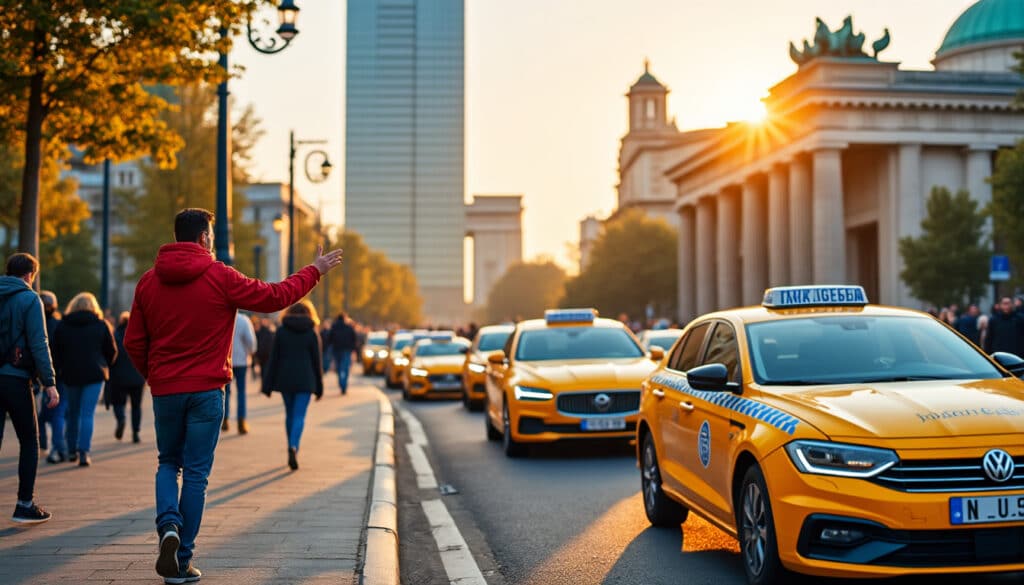
Taxi and cab services in Berlin
Berlin, a sprawling metropolis known for its vibrant culture and rich history, offers a multitude of transportation options for both residents and visitors. While the public transport system is highly praised for its efficiency, taxi and cab services provide an…

Tipping and local payment habits in Berlin
Berlin, a city of diverse experiences, offers an intricate tapestry of cultural practices and daily habits. One such area that can be both intriguing and perplexing for visitors is understanding the tipping etiquette and payment habits in this bustling metropolis.…
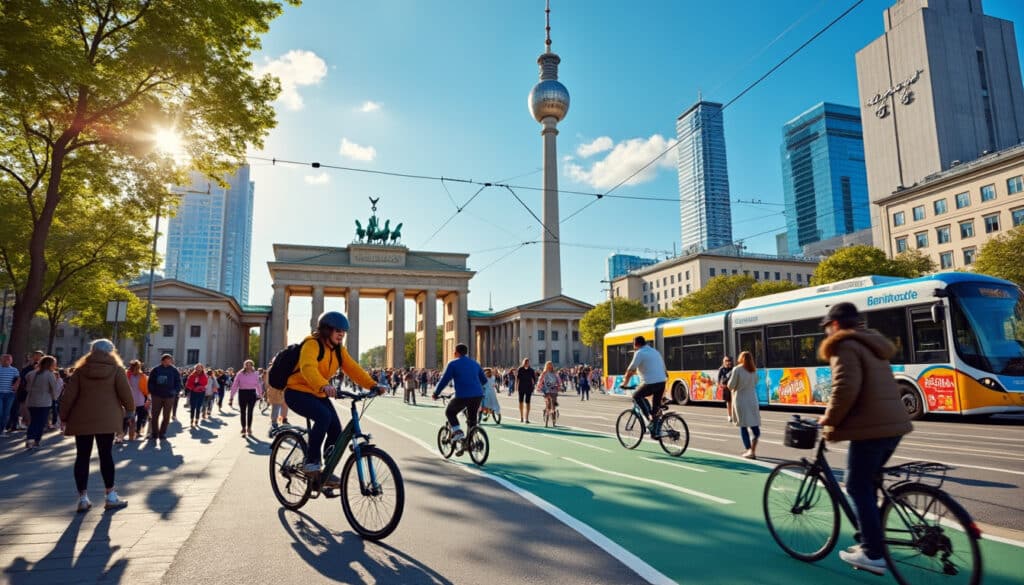
Transportation and mobility in Berlin
Berlin is a city renowned for its vibrant culture, cutting-edge technology, and forward-thinking urban planning. This cosmopolitan hub is not just a cultural heart of Germany, but it’s also a pioneer in sustainable urban mobility. With a sophisticated transportation network…

Planning a trip to Berlin promises an experience rich with history, vibrant culture, and eclectic neighborhoods begging to be explored. Known for its historical landmarks and spirited nightlife, Berlin invites travelers from around the world to dive into its urban…
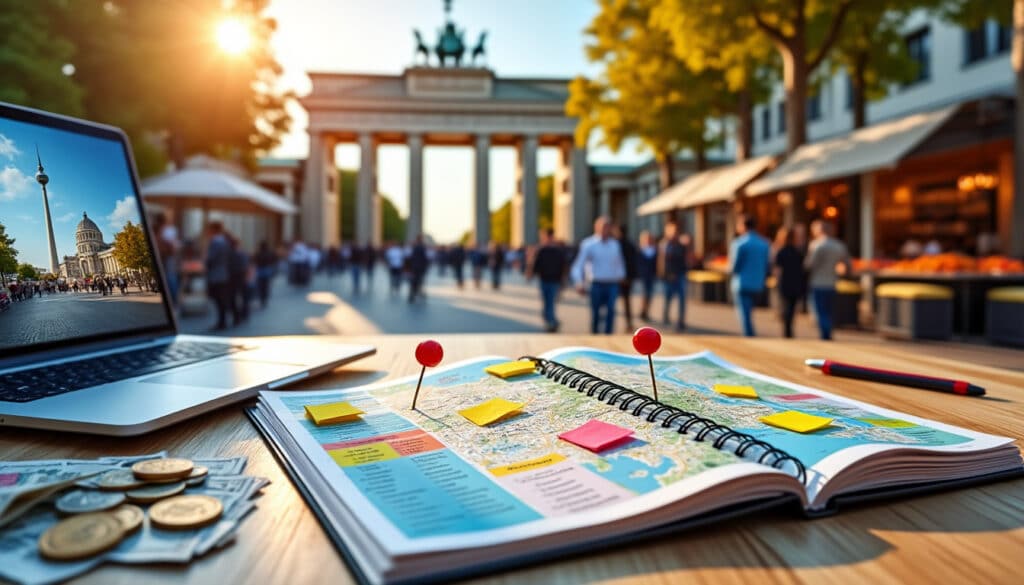
Trip costs and budgeting in Berlin
Berlin, renowned for its vibrant culture and historical sites, remains one of the most affordable capitals in Western Europe. This sprawling city offers a mix of world-class museums, diverse dining options, and pulsating nightlife all at reasonable prices, making it…
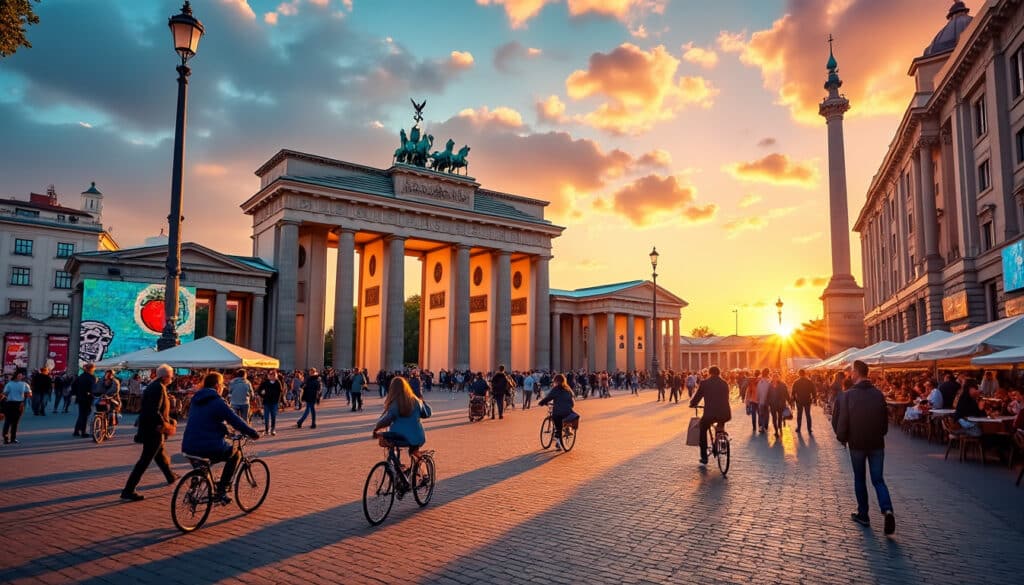
Berlin, a city teeming with rich history and vibrant energy, offers an enthralling experience for any traveler. From the iconic Brandenburg Gate to the eclectic neighborhoods, deciding how long to stay in Germany’s capital can be a challenging task. Whether…
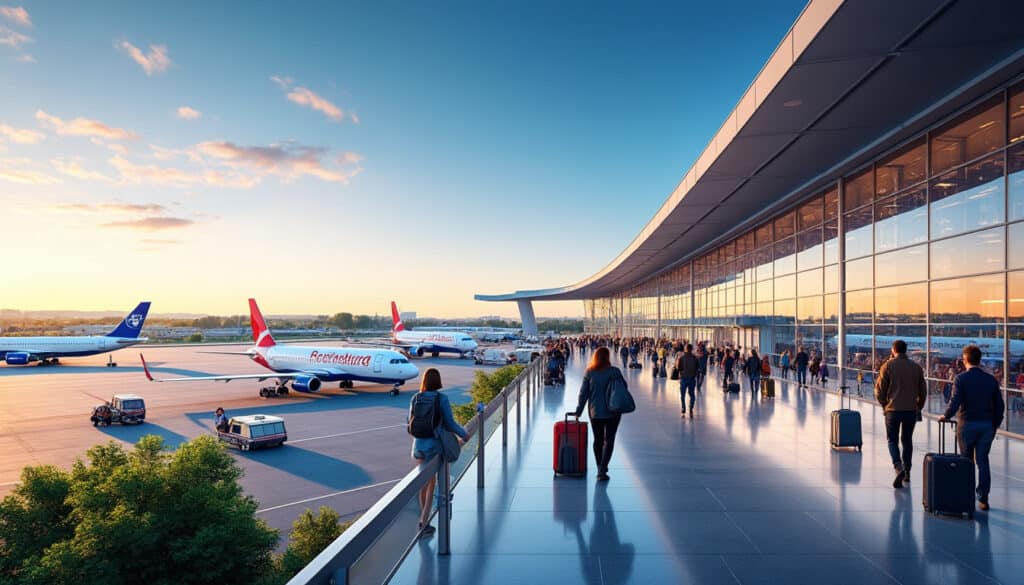
Berlin Brandenburg Airport (BER), named after the iconic German politician Willy Brandt, stands as a modern gateway to the vibrant capital of Germany. Situated in Schönefeld, just south of Berlin, the airport replaced the older Tempelhof, Schönefeld, and Tegel airports…

When is the best time to visit Berlin?
Berlin, a metropolis at the crossroads of history and modernity, offers an eclectic mix of cultural riches and vibrant festivities throughout the year. As a city that never truly sleeps, it attracts travelers globally. From exploring underground techno scenes to…
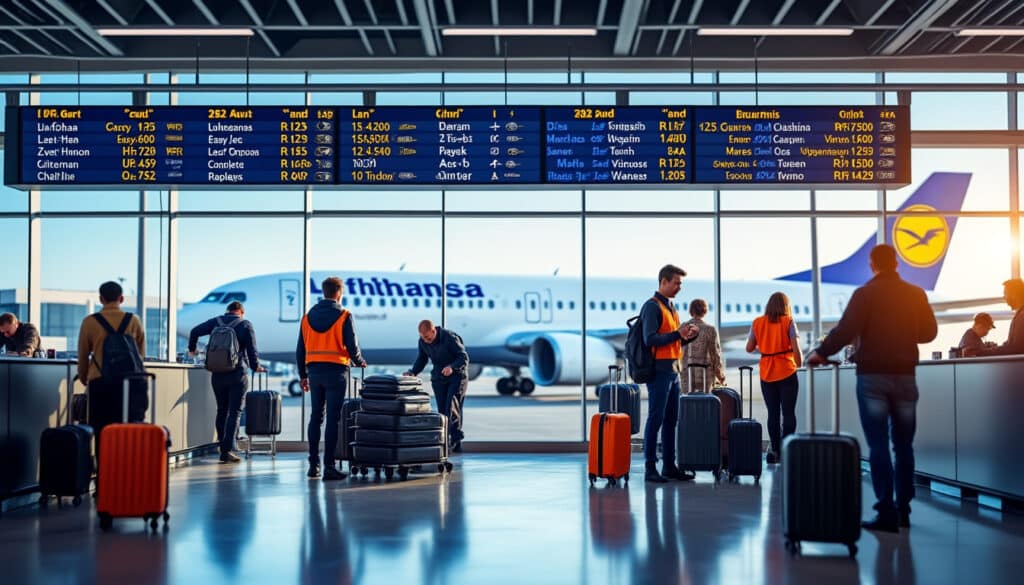
Flights to Berlin and airline options
In 2025, Berlin stands as a dynamic beacon of culture and innovation, attracting millions of visitors from around the globe. Whether you’re heading to the German capital for business, leisure, or its world-renowned techno scene, your journey begins with the…
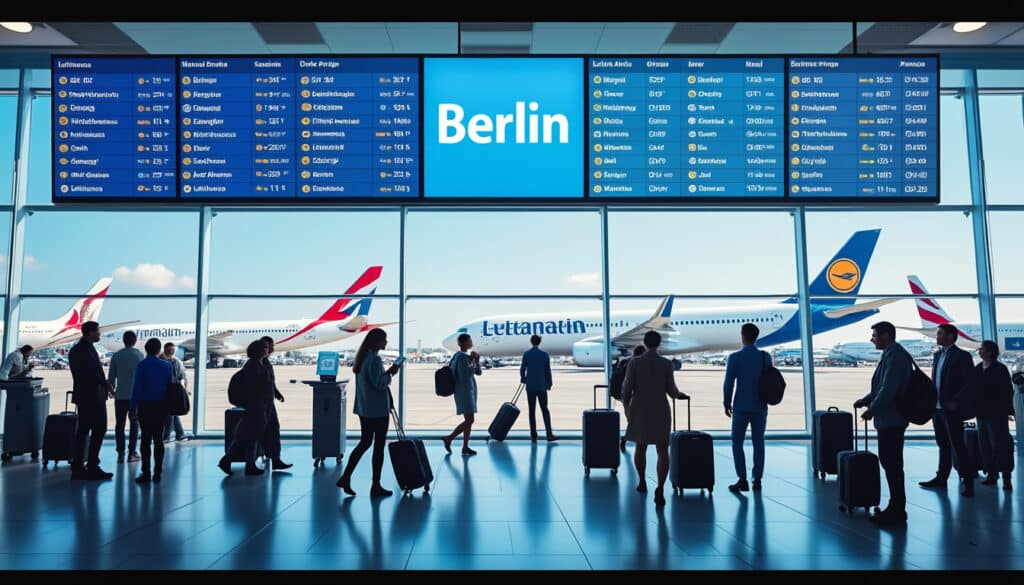
Flights to Berlin and airline options
Berlin, the vibrant capital of Germany, is not only a hub of political activity but also a cultural epicenter. As a city known for its rich history, diverse architecture, dynamic nightlife, and a flourishing arts scene, it’s no wonder that…



